|
This review page is supported in part by the sponsor whose ad is displayed above
|
||||||
 |
||||||
Roger Modjeski on AudioCircle: "I would like to clarify the power issue on the RM-245 since it has already caused a lot of disbelief (or assumptions that it relies on the unusual EML 45 tube). But let me tell you a little story first. Over the last 10 years, I have written several new applications to get higher power out of some common tubes that I thought could do more. If I were employed by Sylvania in the 1950s-70s, I would have done the same thing. There are an infinite number of applications that can be written for any given tube. They involve variations in B+ voltage, current, grid drive, screen voltage and load impedance. The data books list only a few to give amp designers some ideas. Sadly, that's as far as many designers go. David Manley was a stickler for applications believing that the only ones allowed were the ones in the data books and they must be adhered to the letter. Sadly, he took the ambitious 560-volt ultra-linear application from MOV as reliable and made some amplifiers that damaged a lot of tubes. Not even MOV could make tubes that consistently held up in that application. To this day, there are no tubes that hold up well at those voltages on the screen." |
||||||
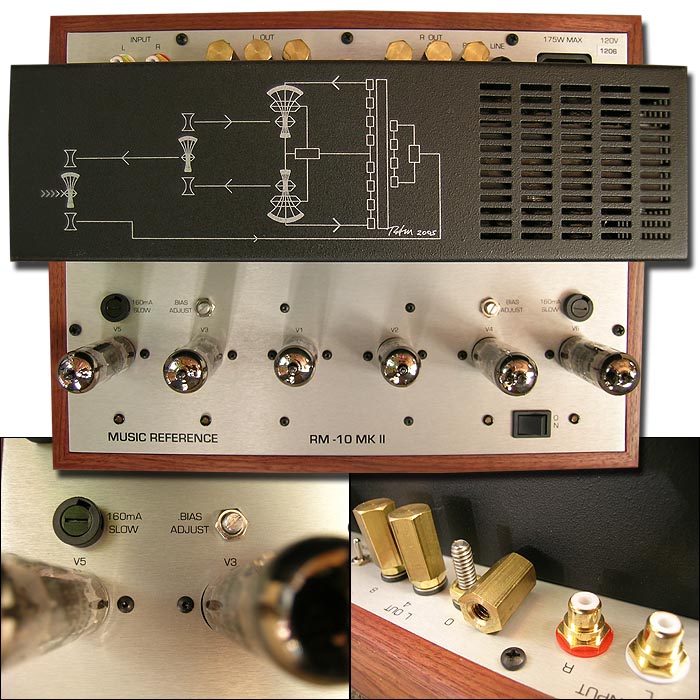 |
||||||
"I research my applications very carefully with dissipation studies on all elements. And, although I have a replacement tube business, I do not want to waste valuable tubes (or your money) on poor applications. One application that caused a lot of comment in the Asylum was my getting 35 watts out of a pair of 6BQ5/EL84s [the amplifier under review - Ed]. They said it couldn't be done yet it is done and has proved reliable over the past 10 years in the field. The RM 245 uses a new application that yields 4 watts at a dissipation of less than 8 watts. There is no extra stress on the tube. Typical applications are 10 watts dissipation (the max for that tube). If you look at the following link, you can see the power vs distortion for 3 tubes at 25 mA. and the EML at elevated current where we take advantage of some of its extra dissipation. I have not yet written the maximum application for that specific tube but I expect to get 8-10 watts at low THD." "The above referenced graph of power output vs THD is at the load. You can add about 20% at the plate. The commonly used application from the RCA manual (RC-11 pg. 86, 1933 and repeated thereafter without modification) gives 2 watts at the plate with unspecified THD (shall we assume 5-10%). Two watts was more than enough power for the times and it seems little has been done by modern 45 amplifier designers to consider new applications." "Applications once written are forever left to rest and copied verbatim by every other maker. Remember, an application is often written to entice the designer (of a table radio at that time) into a circuit that fits his technical and economic needs. The low B+ (275V at 36 mA = 9.9 watts dissipation) of this application is attractive. Note they have 2 even lower power ones for those more economical who desired less power back then. This tube was designed to be a step up from the type 71 (max pwr. 0.79 watts) and a practical alternative to the dismally inefficient and hard-to-apply type 50. Note that the 50 was rapidly pushed aside for the much more popular 45. I have a Brunswick Panatrope that uses a 50. It's a monster that sold for the price of 1.5 Model T Fords in 1928. The 50 also had to be transformer-coupled when resistance coupling was coming on fast. My application is 310V at 25 mA =7.75 watts along with circuit and load differences." |
||||||
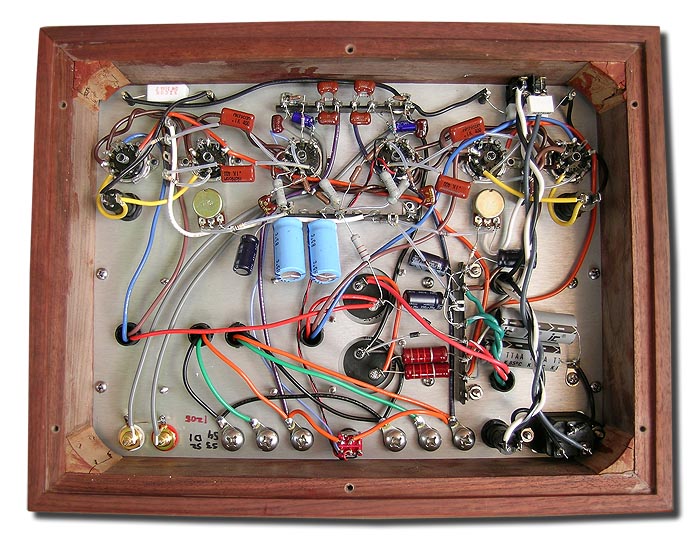 |
||||||
| To recap what Roger just said, the doubling of the output power which a manual states as achievable from a given plate dissipation is possible because much tube data gives conditions that approximate a mere 20% efficiency. Increasing the idle plate voltage, decreasing the idle plate current and increasing the load resistance to optimum can greatly increase operational efficiency, hence output power. Back to Roger: "I intend to write a paper on the more complete story of 2nd harmonic distortion theory. I will say here that it must be minimized (but not at the expense of adding other distortions). What listeners don't seem to realize is that large amounts of 2nd is fine for a single note but not for a full orchestra. As I like to say "Please tell me what is the second harmonic of Beethoven's 9th? The amplifier is having a little trouble figuring it out". Once music becomes a complex signal, the second harmonic argument goes right out the window. The amplifier can only act upon the instantaneous voltage it is given and has no idea what notes are being played. At that point, it's Intermodulation Distortion we had better be taking care of. How many of us have heard our single-ended amps make a mess of a symphony yet play a solo voice beautifully?" |
||||||
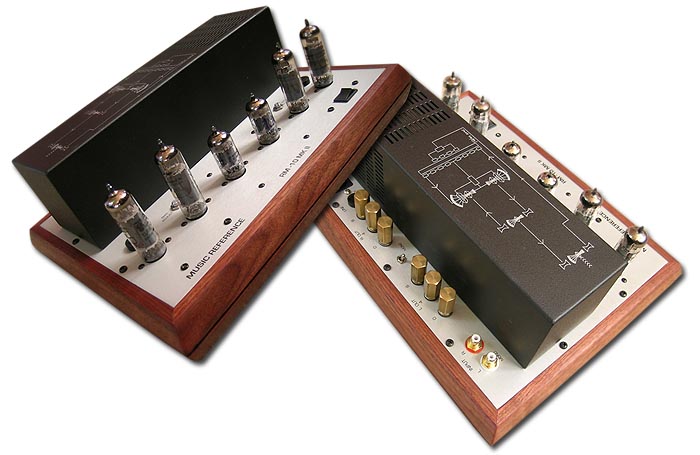 |
||||||
| As someone who's paid his dues the hard way -- through many years of apprenticeship as an amplifier repair man who learned invaluable lessons in common failures that were both circuit and parts related -- Roger Modjeski has earned the right to be opinionated and outspoken. To boot, it seems he's built up an enviable track record for not blowing smoke but instead building no-nonsense amplifiers that are reliable, sound good, don't push your electricity bill through the roof and are more or loss load-invariant to actually drive whatever speakers they're hooked up to. RM is highly critical of noise and takes pride in the RM-10's unweighted noise level of 0.3mV max. He also gives detailed information in his most excellent owner's manual with circuit schematic on how to alter the amp's stock 0.86V input sensitivity (100Kohm input Z) and concomitant gain structure as fixed by two feedback resistors (one per channel). This accommodates scenarios wherein the self noise of high-gain preamps might reach unacceptable proportions at the speakers when amplified by the 25dB of the RM-10's stock gain. The adjustment window of altering the resistor values ranges from 39dB gain/0.17V input sensitivity to 17dB/2.2V. The manual is well worth reading and includes the following nuggets: "The RM-10 is very tolerant of short circuits and will not be damaged by them." "The amplifier is flat within 0.1dB and has low distortion of 0.3% when played below clipping on average level material." "At the recommended bias current of 30mA/pair, the idling dissipation is nine watts or 75% of the tubes' rating. I estimate tube life to be 5,000 to 10,000 hours. Although higher idling currents will reduce distortion, it can also be reduced by light loading. Basically, light loading reduces the output current demand on the output tubes, allowing them to be more linear. It also reduces noise, raises damping factor, reduces distortion by 78% and allows for 80% more peak current when needed. The only loss is about 20% of the power rating or 1dB." Light loading means connecting the speaker on the tap that's one half its nominal impedance rating (i.e. the 4-ohm tap for 8-ohm speakers). For 4-ohm speakers, the maker recommends running two RM-10s bridged to 70-watt monoblocks. |
||||||
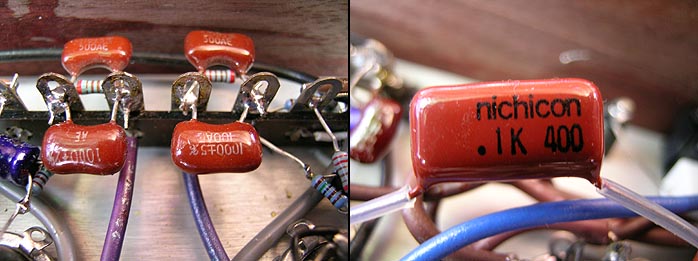 |
||||||
To get the RM-10 at its intended price point without performance degradation, the solid brass speaker binding posts had to be made in-house. They allow the use of a 3/8" nut that can get ratchet tightened without stripping. The posts are spaced at 3/4", with optional caps for those wishing to use bananas. The amp is DC-coupled and uses a 100kHz RF filter at the input. Two Resista brand series plate load resistors achieve the requisite derating to insure long life. "The total value of the first plate load is over 600Kohms to become a virtual current source. This allows the 12AX7 to operate in its most linear and highest gain mode. A neon lamp is used to conduct the large positive grid voltage and protect the second state during warm-up. This is an oft-overlooked detail that makes the 12AX7 much happier and extends its life markedly. Unlike the classic split load converters, the RM-10's run at lower current to extend life... Taken a lead from its big brother, the RM-10 power supply uses a voltage doubler to achieve best regulation from the transformer... In the power supply the customary equalizing resistors have been eliminated from the two series-connected electrolytics feeding the driver stage." Additionally, the RM-10 is fuse-protected against power tube shorts or arcing and four replacement fuses are included. |
||||||
 |
||||||
Upon power up of the small 12.75" w x 9.75" d x 5.25" amplifier, the driver tubes elicit a brief bright flash just as described and explained in the owner's manual as perfectly normal. In use and on my customary Zu Definition Pros, the RM-10 is dead quiet - and dead here means ears on the driver and no evidence of amplifier activity. Into 101dB speaker sensitivities and for a 35wpc $2,000 stereo amp, that's bloody unexpected to say the least. I'm happy to confirm that RM ain't blowing smoke of any kind with his noise claims. Sonically, allow for a six to eight weeks lead time to put the RM-10 through its paces and generate ample comparative notes with numerous in-house tube amps such as the 2wpc Yamamoto A-08S, the 8wpc SilverTone Model 3.2, the 8-watt Canary Audio CA-308s and the 60-watt Genesis Audio M60s. |
||||||
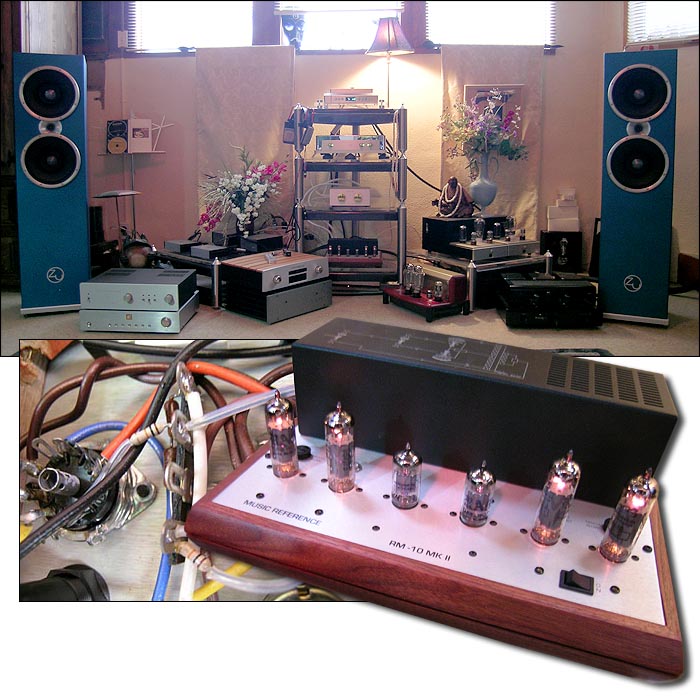 |
||||||
 |
 |
|||||
 |
||||||